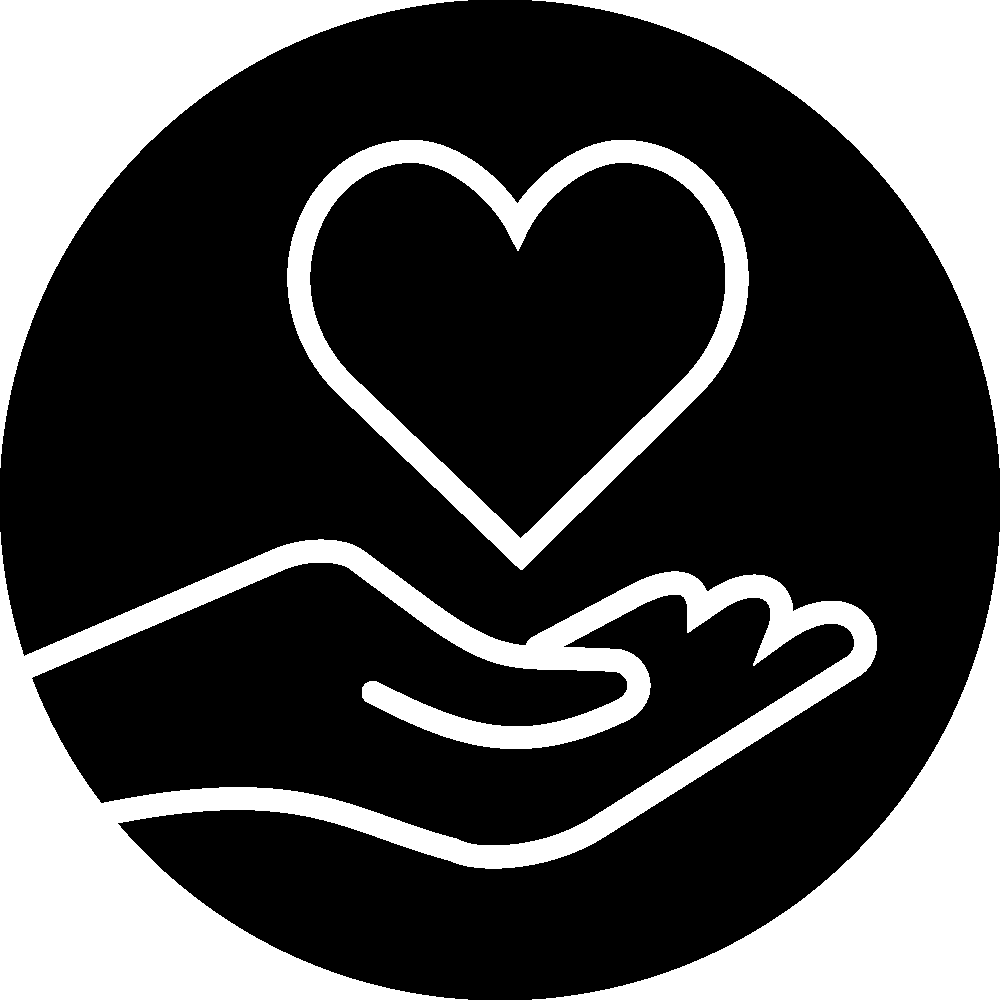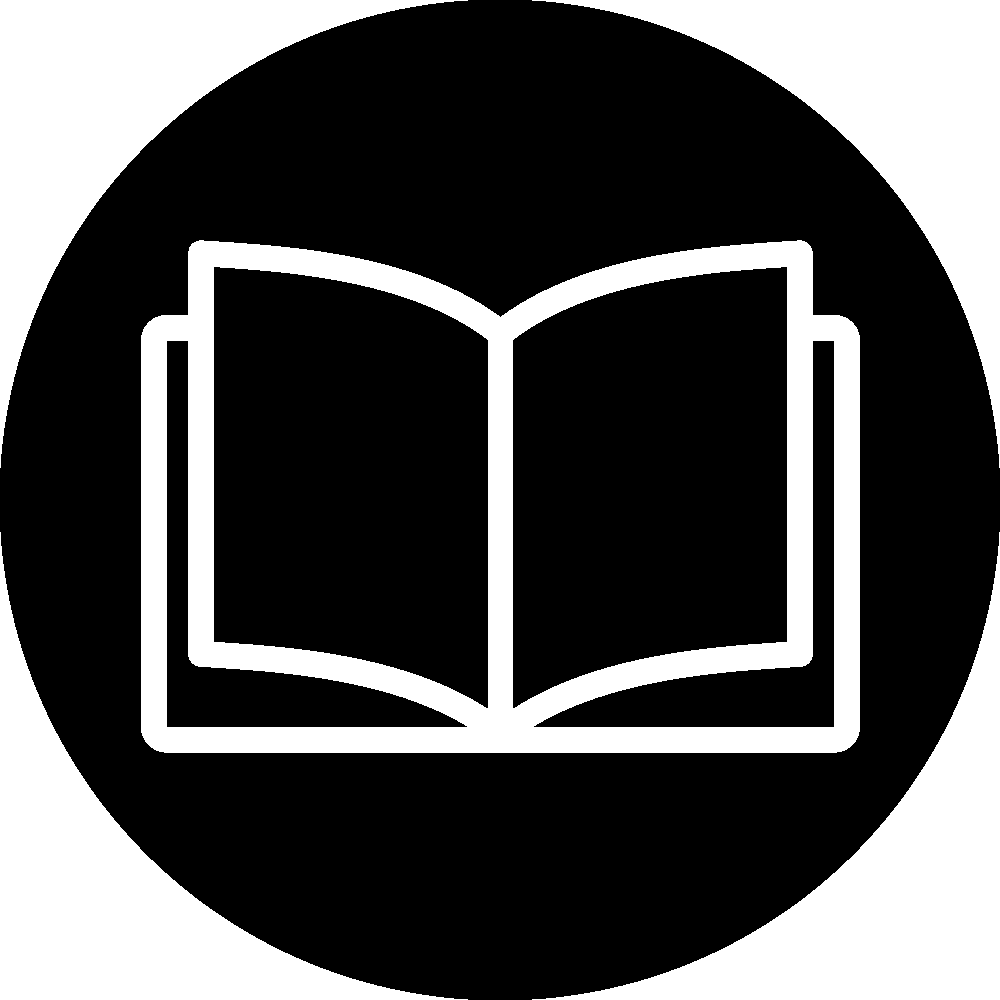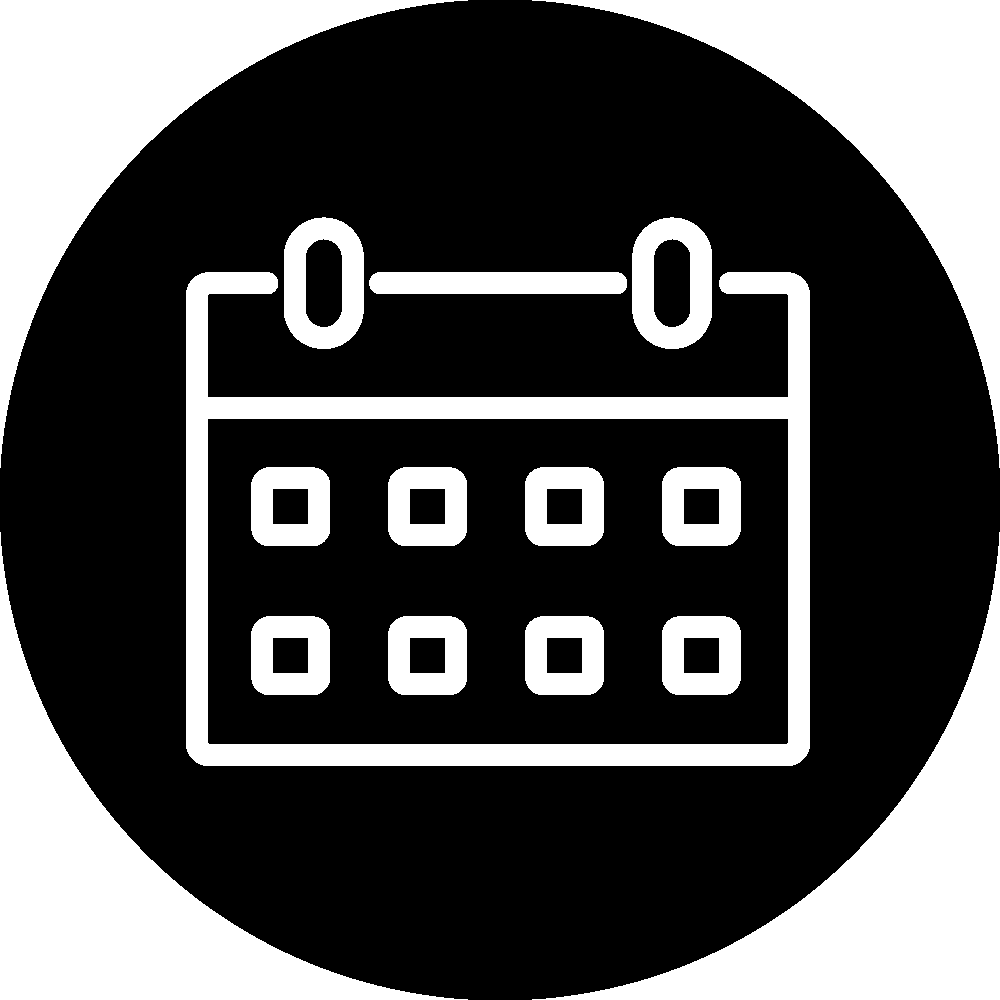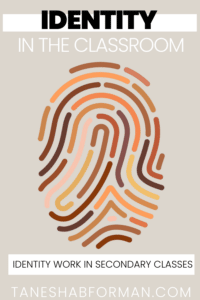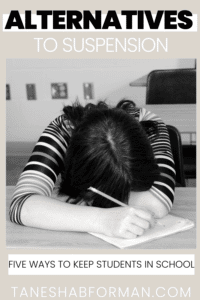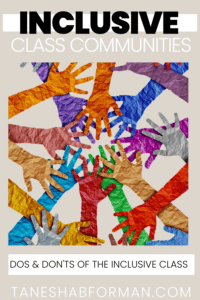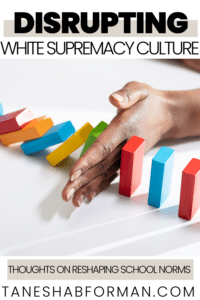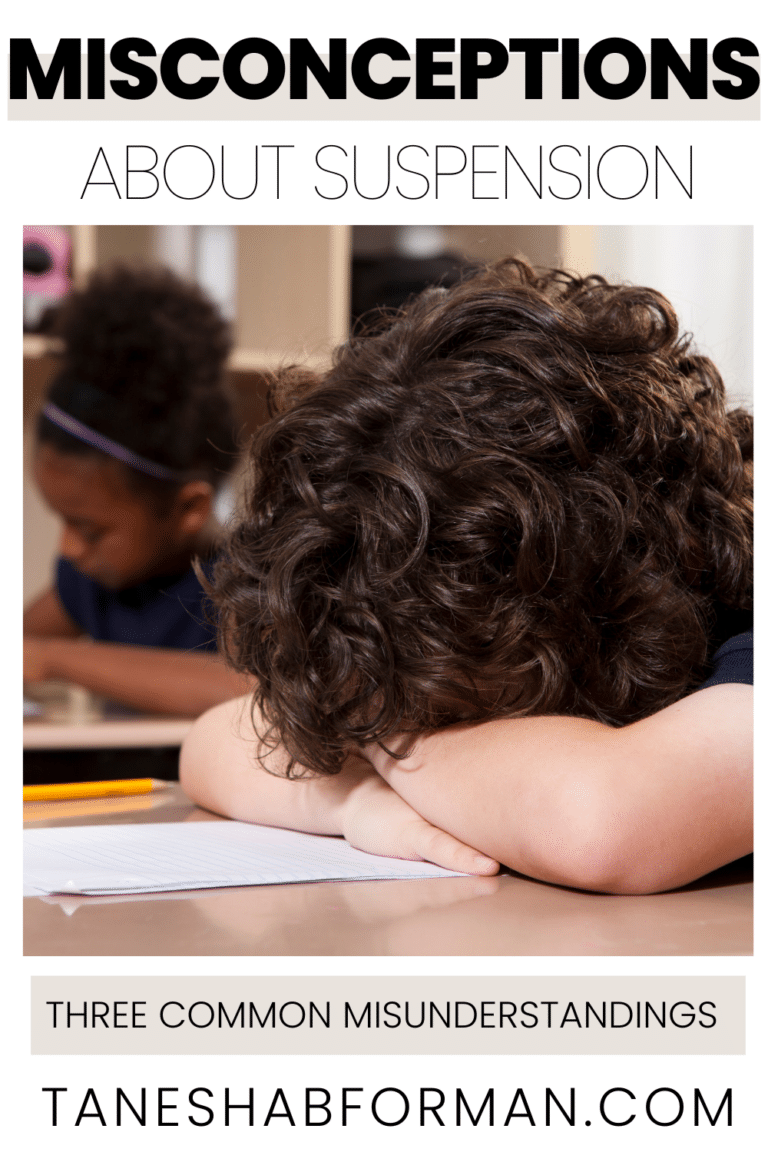
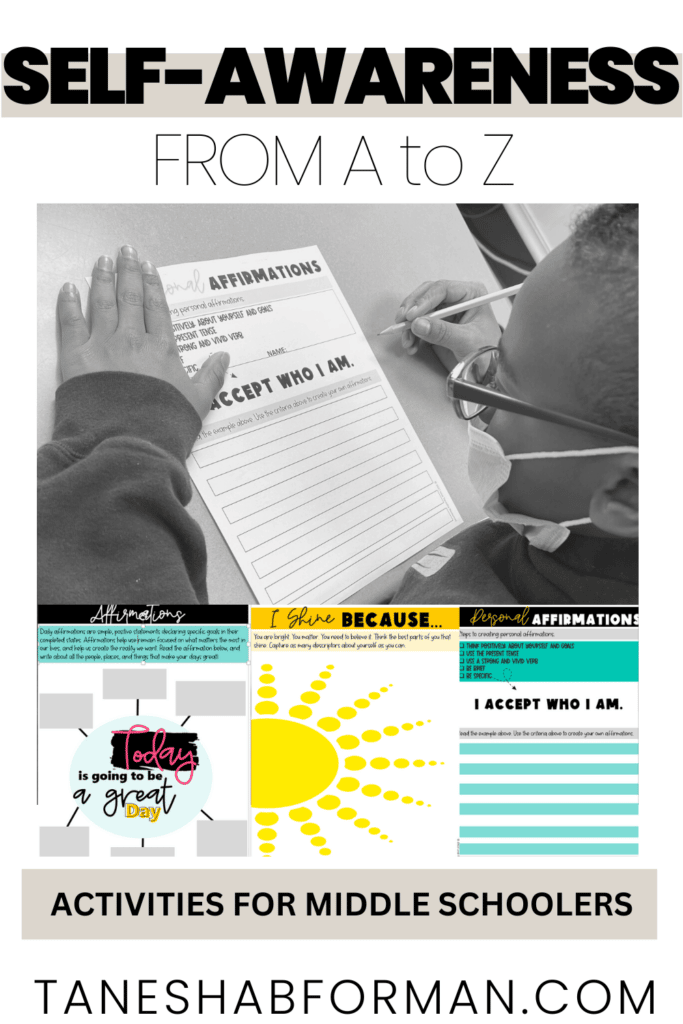
Self Awareness & Middle School
What is Self-Awareness?
In the last 6-7 years, the phrase “Social & Emotional Learning” has taken a gigantic step into the educational landscape. Educators, researchers, and families are all working to understand the knowledge and skills that promote healthy self-perception, development, and relationships. In short, the goal is for individuals to experience success in all avenues of life. Self Awareness is one of the “Big 5” competencies identified by CASEL (Collaborative for Academic, Social, and Emotional Learning) designed to support lifelong development and learning. But what is?
Self-Awareness is the ability to recognize your thoughts, emotions, hopes, and values through assessing your strengths and areas of need and how they manifest in different contexts. In short, self-awareness is recognizing who you are and how you show up. This level of heightened awareness comes easier for some people, and there are ways individuals can sharpen and develop their self-awareness skills.
Activities + Resources
All about me and my identity: Our identities are dynamic and make up who we are. Lead students (and yourself) through activities that all students to explore their personal and social identities. This post includes ideas and a freebie to get you started. The big ideas/questions to prioritize are:
- Who am I?
- What beliefs, value and characteristics make me unique?
- How does my identity influence how I interact with others who are similar or different from me?
Need more ideas? I have a full Identity and Privilege Unit available. Join my email list to receive the first day of the unit for free!
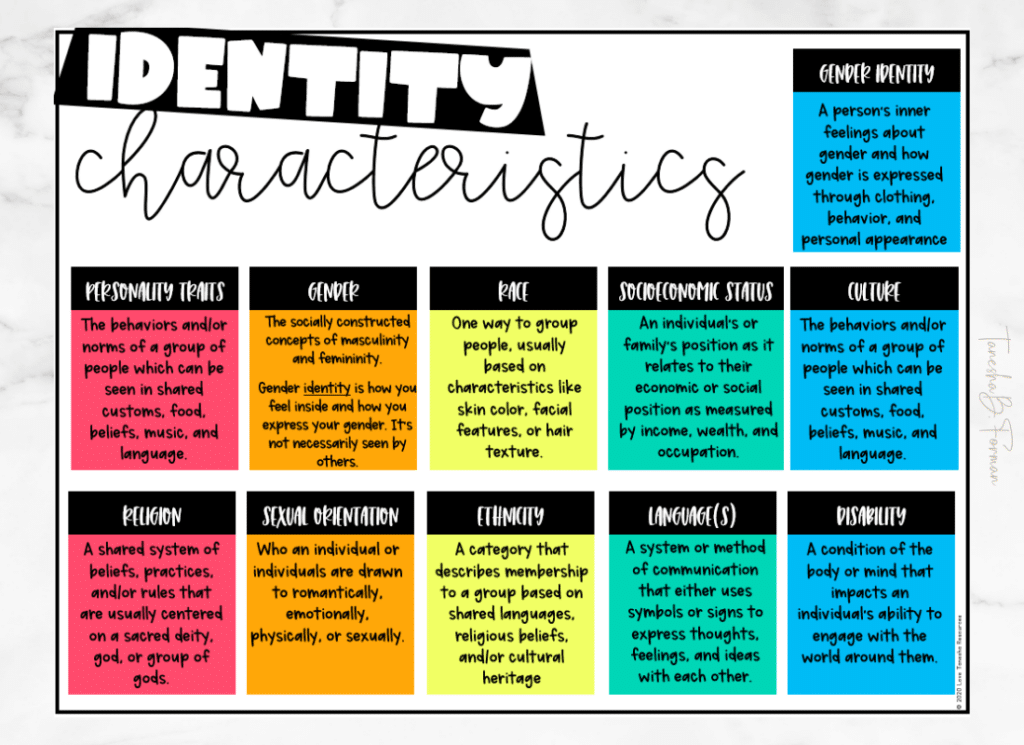
Bucket List: For students, share as a collection of goals and aspirations they want to accomplish during their lifetime. Allow students write down the experiences/achievements they want and assist them with creating steps to achieving these goals by planning. Remember:
- There are no right or wrong experiences.
- These are personal so no forcing students to share.
- Kids have limits with what they can do so help them to create a different versions of a bucket list (e.g. summer, teenage years)
Don’t like the name “Bucket List?” Try: List List, Dream list, Things to Conquer, My Life’s Must Dos
Connect with Self: A connection with self is about being attentive to what is going inside a person and why. Practice developing a dynamic view of self and learning new aspects of your inner universe. One place to start with a class is prioritizing time for students (and yourself) to spend a few moments noticing how their body is feeling, what emotions are present, what state of mind they are in, what their mood is like, how settled they feel, and what is needed to feel present.
Describe your place in your family/community: Spending time reflecting on the communities they are a part of is an excellent way for teens to understand how their life experiences and connections make them who they are. Expand the concept of family to include people students choose as family/close friends and allow students to think about how their position in their “family” or community influences how they think and behave. Grab the activity here.
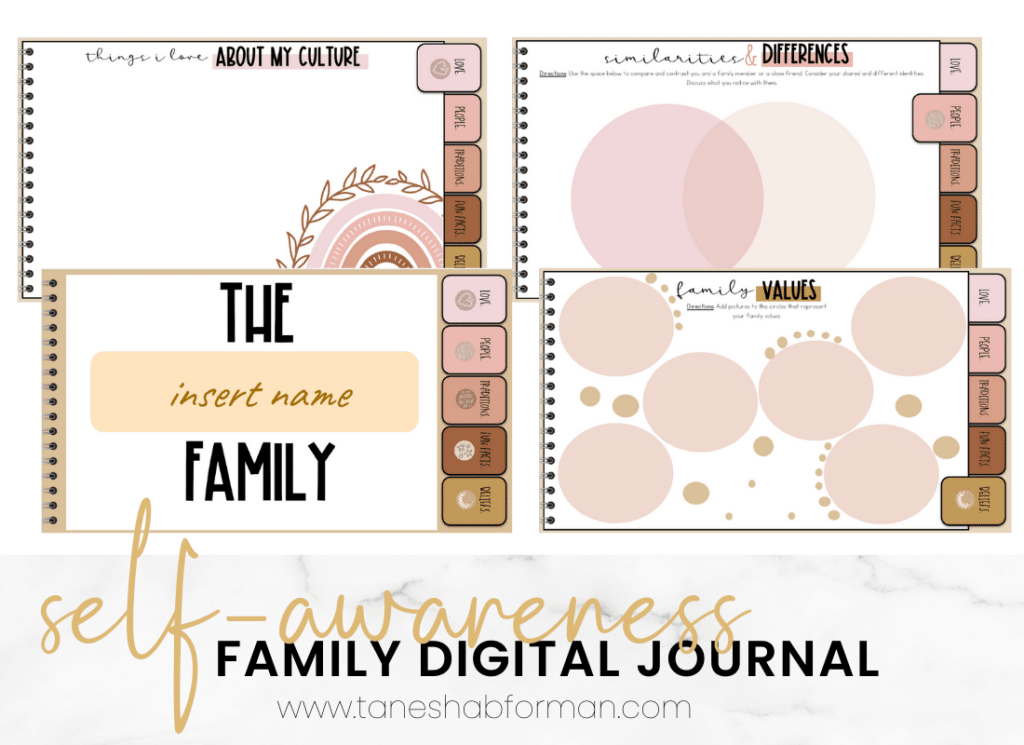
Eulogy: Writing your own eulogy allows you to convey how you want to be remembered to yourself and others. As a self-awareness practice, students can determine what matters the most to them and how they want others to remember them. Please be aware that this can elicit different emotions from students based on their life experiences. Make sure you talk with families and your school guidance counselor/social worker before introducing them to students. Key ideas to include:
- What accomplishments are you proud of?
- What lessons did you learn?
- What were your favorite stories that give insight into who you are and what you like?
- What is a phrase you want people to hold onto about you?
Feelings to Action: Awareness of what causes an individual to feel different emotions serves as a catalyst for decision making. If you know what makes your mood improve, you can lean into that when feeling down. Vice versa, you can avoid things or experiences that lead to less desirable emotions. Try a reflection like this to help students identify things or actions that make them feel different emotions.
Gratitude: Holding space for gratitude is so important and often understated. There are a number of ways to create habits and opportunities to embed gratitude in the classroom community.
- Before and/or after a lesson hold space for students to share gratitude
- Keep a class gratitude jar for students to add their appreciation
- Model ways to demonstrate gratitude
- Use starter sentences
- Keep a class gratitude journal/list
- Use quotes
- Celebrate gratitude
For more detailed thoughts and tips, check out this post.
Have growth mindset: Teach students about growth mindset as a tool to take ownership of their life and persevere. This is a helpful article that has excellent ideas for getting started. AND, don’t fall into turning growth mindset into a lesson on grit. Here’s a post I wrote a few years ago to explain why.
Identify your goals + dreams: Student goals are pivotal to their development and investment in their education. Goals setting helps students clarify their “why” and set aligned targets. Include opportunities for students to set and reflect on personal and academic goals.
Journals: Journaling assists with capturing thoughts, feelings, and emotions that individuals experience and assist with emotion regulation and stress management. Middle schoolers need outlets for creative self-expression outlets and reflection tools to deal with their ever-developing minds, bodies, and identities.
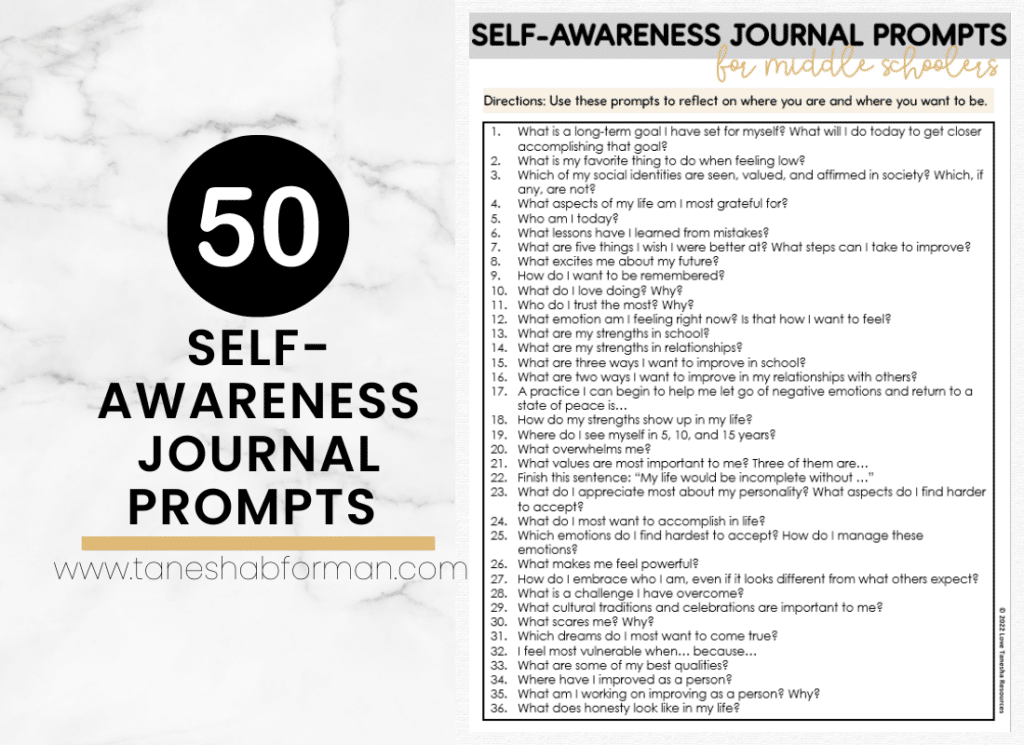
Know your values: Reflecting on personal values or standards helps kids consider how and why they respond to different situations. The process of identifying values targets self-awareness because it deals with the decision-making process, clarity of beliefs, and how individuals perceive themselves. Here’s a quick resource to jump-start the process with big kids.
Listen to your thoughts: Teach students the importance of pausing and listening to the voice in their head. There are so many distractions vying for our attention and there’s real value in mindfulness, or being conscious of our thoughts. We all learn from listening to ourselves and practicing being present in the moment. For students, this doesn’t need to be more than 30 seconds of silent time with deep breaths in and out while noticing thoughts and feelings.
Model/Share your feelings: Middle schoolers are still kids and will learn through modeling. Don’t underestimate the value of sharing your emotions and how you are processing them as an individual. That could sound like, “right now I am feeling frustrated because I have tried a number of times to get your attention and multiple people are choosing not to follow directions. I need to take pause to self-regulate,” or “I am smiling because I am proud of the effort everyone gave today and how that empowered our community to be stronger. I also feel encouraged to try this activity again because of its impact on our class.”
Name your priorities: Teaching big kids to name their priorities helps with time management and making process on goals. It also helps them focus on what matters the most to you right now. Priorities undergird goals. They are the actions that clarify what to attend to in order to reach a goal. Get started with these free resources.
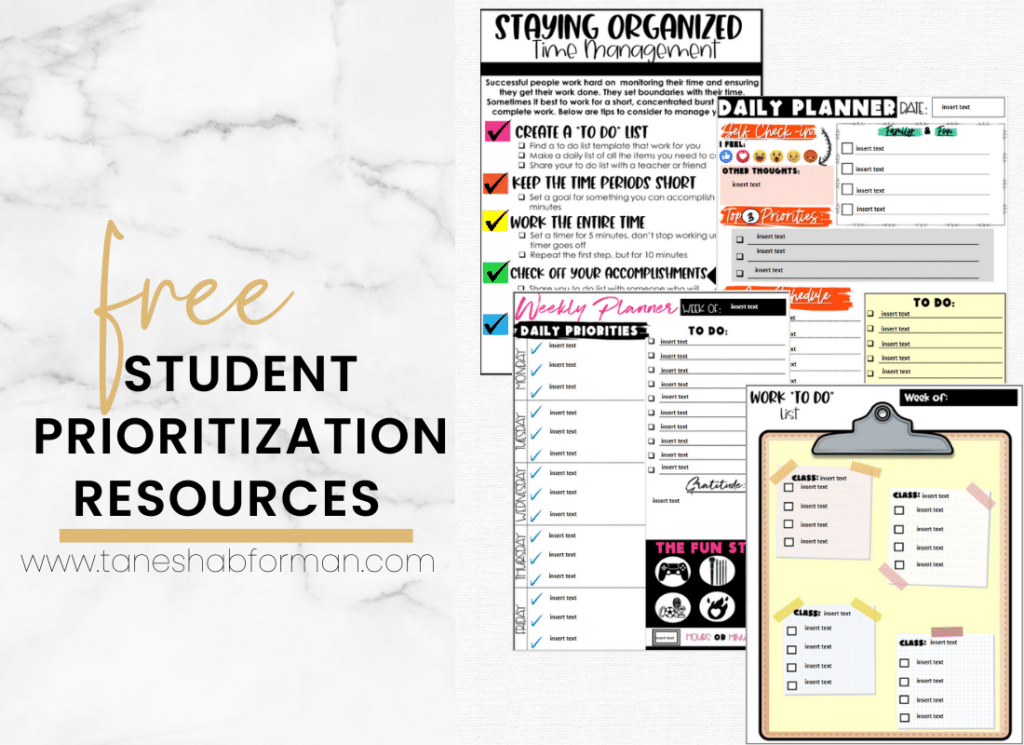
Outline a personal narrative: Storytelling is a tool to recall, organize, and draw meaning about a person’s character and identity. When individuals reflect on the events that have shaped them, they can develop an increased awareness of their mindsets, the values that drive their decisions and actions, and their strengths and areas to develop.
Pay Attention to How You Feel: Remind students that their emotions are a valuable resource. Feelings and emotions give insight into what’s fulfilling you, what’s draining, and everything in between. Share with students a few benefits of regularly paying attention to their feelings and noticing patterns. Benefits include:
- Trusting yourself and what you feel in different contexts
- Increased reflection on your decision-making
- You can protect yourself and your health by focusing on how you’re feeling (emotionally & physically)
Questions: To walk in our truth, we have to start with being honest with ourselves. There’s so much to learn by inviting vulnerability through tough questions. For example:
- Am I happy?
- What do I want to do today?
- What is holding me back from being successful?
- What am I choosing to ignore? Why?
- Do I believe I can achieve my goals?
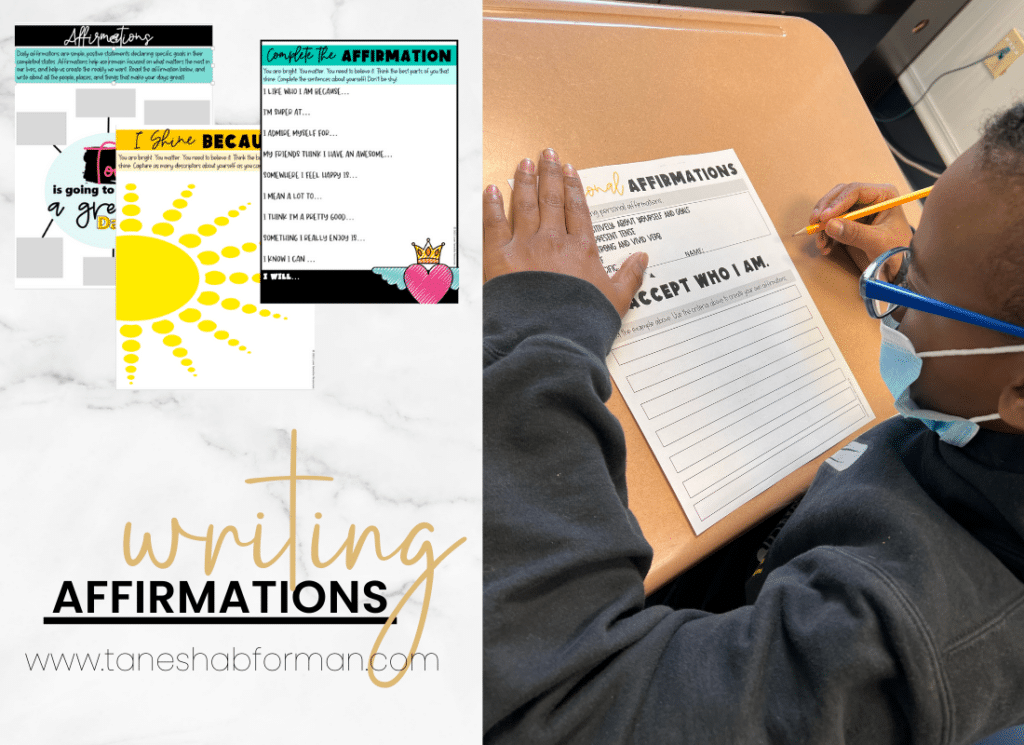
Recite Affirmations: With all the distractors hurled at preteens and teens, affirmations can keep them grounded and reinforce their value and self-worth. Teaching students to reframe their thoughts with positive messages can boost self-love, confidence, and overall health. Students can write their own, or teachers can provide a list to choose from. The goal is for students to develop a habit of saying them. Here’s a starter pack.
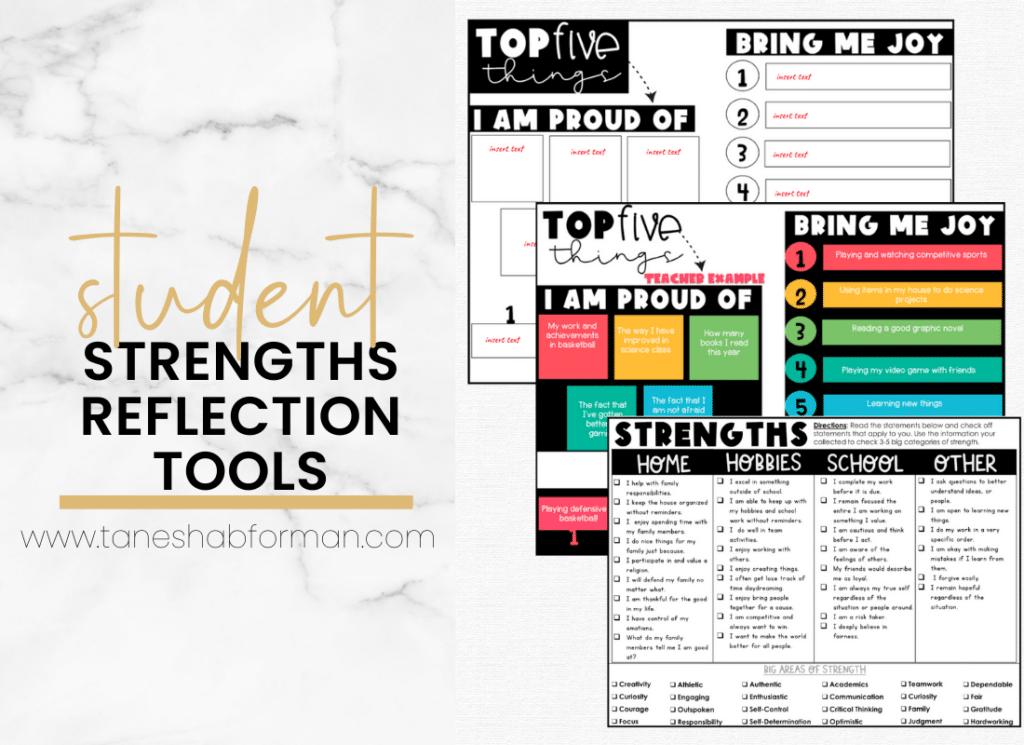
State your strengths: Spending time naming strengths helps clarify what makes individuals unique, and boosts confidence. Additionally, when individuals know their strengths, it decreases the need to compare to others because there’s security in one’s strengths. Here’s a workbook to help students explore their strengths. If you want something free, check out this activity I created.
This I Believe Reflection: A belief is the acceptance of something as true or existing. Many of our beliefs are tied to our experiences and/or values. Start with a big question for students and allow them to brainstorm. For example, ask, “what do you believe?” and allow students time to brainstorm. Engage students in a personal reflection about what they notice about their beliefs. Be sure to keep a brave and safe room with clear expectations. To go deeper, have students choose a statement from their brainstorming and expand on what comes to mind and examples of that belief.
U collage: This activity is about all U. Students will create a collage representing who they are, their interests, identities, and beliefs in the shape of a U.
Vocabulary of emotions: Expand students’ emotional vocabulary to communicate needs better and represent their emotions.
- Use books to describe the feelings characters are showing.
- Movie clips can also provide opportunities for students to expand on feelings using “evidence” (e.g., facial experiences, tone)
- A daily feelings check-in delves into the shades of meaning. Using an emotional word wheel allows students to acquire more words to describe their feelings.
Write a purpose statement: A personal purpose statement gives direction to what a person wants to accomplish in life and what they stand for. It’s rooted in what is important and focuses on values, beliefs, goals, and purpose. Example: To live each day to the fullest and appreciate, learn and grow from every experience; To put forth the effort, discipline, and all that it takes to excel and be the best athlete. To get started:
- Write what’s most important.
- Name what you want your impact to be.
- Determine your life and personal goals.
- Think big and bring the ideas together.
- Make the statement affirmative.
- Read, revise, and repeat until it represents you.
e(X)amine biases: Biases and assumptions impact emotions, beliefs, attitudes, and actions. Understanding biases and how it affects our decisions will lead to heightened awareness of self. Becoming self-aware requires a commitment to the practices of self-examination, self-monitoring, and challenging assumptions. In the classroom, a starting point is understanding implicit and explicit bias. Educators can start with the definitions, work through scenarios, and invite students to think through their biases
Your future career: Hold space for students to explore different career options and how their “future career” connects to their interests and skills.
- Watch movie/video clips that delve into different careers. Discuss the characters and their work/life roles. Think about what implications these might have for work and lifestyle choices.
- Complete a career interest assessment like this or this (for older kids)
- Research a career interest and invite guest speakers from different fields to share their experiences (cast a wide net, I once got a football player to come to my class)
Zero in on your vision for the future: Vision boards were all the rage about ten years ago, and they still are. Proving the space for students to visualize their future and create a visual representation of their goals is powerful. These can be done digitally or using old magazines and a poster board. The key is for students to create a visual representation of their hopes and dreams.
Self-awareness enables us to see ourselves clearly through reflection and introspection. So much of what I shared is great for anyone! How do you support self-awareness in your eduspace? Share in the comments. Enjoy my work? Considering buying me a cup of tea. Your contributions keep the posts with free links rolling and enable me to support other BIPOC creators!

PIN FOR LATER!
JOIN THE COLLECTIVE
Sign up and access the FREE resources to support your Anti-Bias/Anti-Racism journey.

Tanesha B. Forman
I'm a current middle school administrator who loves breaking down complex topics and providing opportunities for educators learn, reflect, practice, and implement methods that foster equity and anti-racism. I believe we win together!
Behind the Blog


Hi, I'm Tanesha.
I’m a current middle school administrator who loves breaking down complex topics and providing opportunities for educators learn, reflect, practice, and implement methods that foster equity and anti-racism. I believe we win together!


